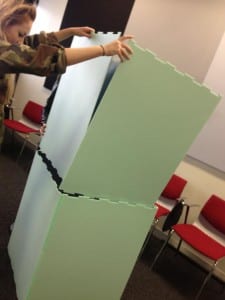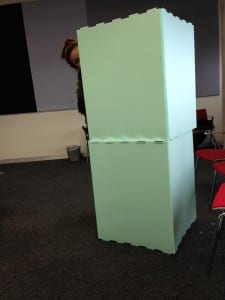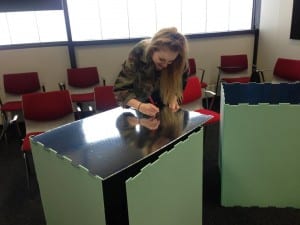After weeks of development and idea forming we wanted to think about how we would be involved in the performance and more specifically how we would look. Initial idea’s included ‘bring the painting to life’ and dressing as if we had come from the painting, however as our thoughts have progressed and changed this is no longer relevant. Then from discussions with the public and the realisation that our focal painting was indeed an idealised image, this brought the idea of somehow masking our faces as a reflection of the masking of reality. The obsession with beauty has become more and more important in society over time and has also been particularly important to art, “What is beautiful is felt to be perfect, exquisite, the finest, and the most harmonious; there is always a quality of the ideal with beauty” (2012, p177). There has always been a desire for perfection but who decides what is perfect or not and is it really necessary?
Although at first we thought using actual masks could be used, we soon found using other less conventional ways would work more to our advantage and complement the piece much more. To emphasise our idea’s on the development of art and how now society and people have become idealised and perfected, we decided on the idea of makeup. To incorporate this into our piece, we came up with the idea of applying and wiping away makeup throughout the process of our piece. This which would show the transgression of idealised art from hundreds of years ago to the perfection expected of people and society of the twenty-first century. Our faces will in turn become a canvas which we will repeatedly paint and then remove to reveal the reality of the human form and thereby removing the idealisation of society. Because of this process, we will be left with make-up wipes full of dirty makeup which we leave around the space to emphasise the negativity of some art which masks and conceals the reality of what was painted. Sam then came up with the idea of the makeup wipes being a basis for our costume. We will start the piece all in white and then as the piece progresses and we repeatedly remove makeup, our outfits will become progressively dirtier like that of the wipes. At some points we will even use our costume to remove the makeup from our faces as well as the wipes themselves. The result will hopefully be very striking and highlight our aims and thereby remove the ‘mask’.
 End result after makeup is removed.
End result after makeup is removed.
To end our piece, I thought it would be quite poignant to move into the opposing room which holds the model of the dead body. As a group, we all agree that despite being modern and quite shocking, it is in fact a more accurate representation of life as the actor has not tried to hide reality or idealise death. It is honest and raw and so we feel it would be appropriate at this time to remove our makeup for the last time. Often, modern art is criticized as nowadays anything displayed in the right way can be interpreted as ‘art’. It has changed drastically from the traditional paintings which the usher gallery displays and is often misunderstood. Will our performance shed a more positive light on a new age of art?
(2012) ‘Psychophantic Relations With Art: Analytic Romanticism and the Problem of Perversion’ Contemporary Psychoanalytic Studies. 15, p175-208


